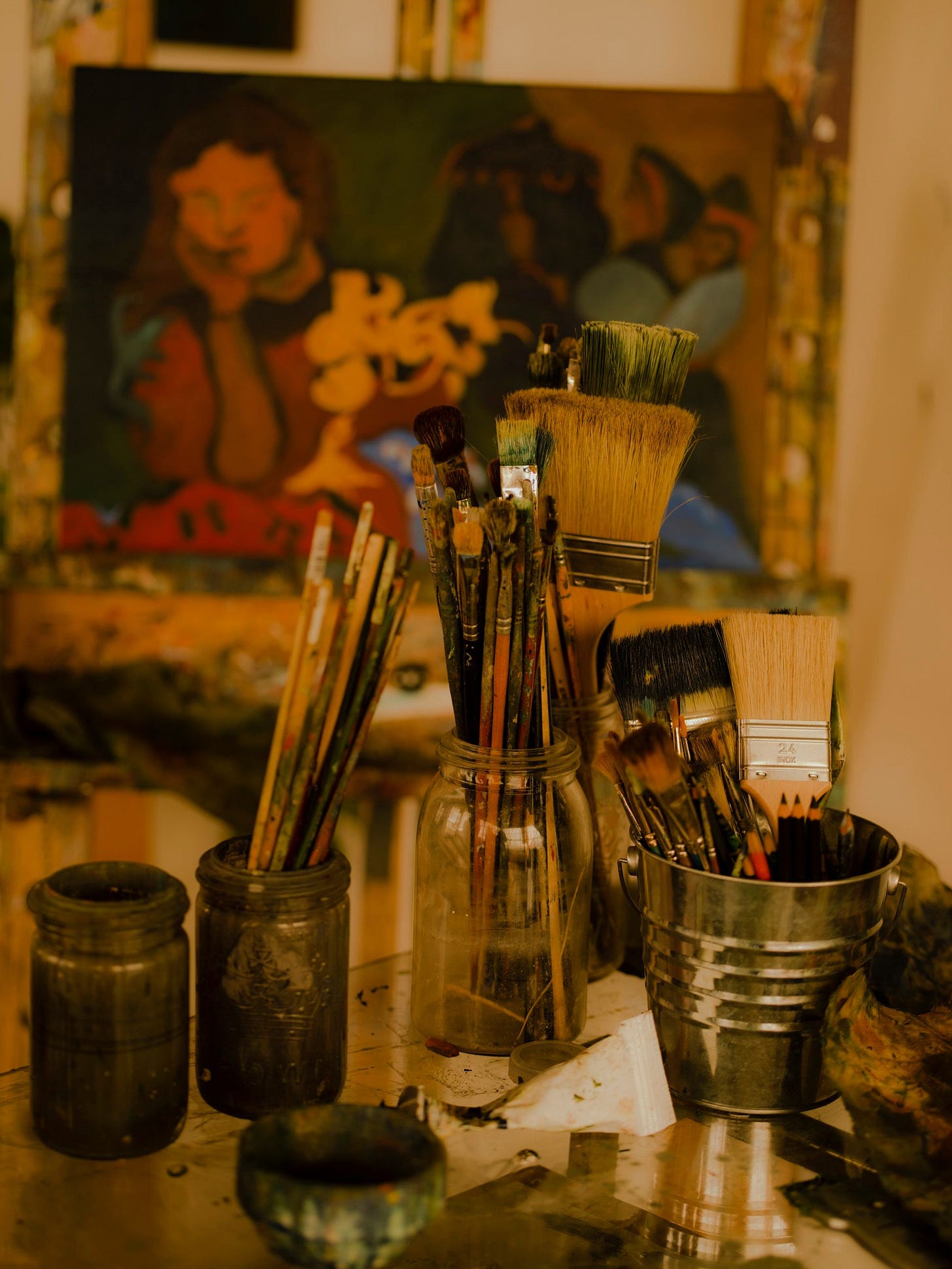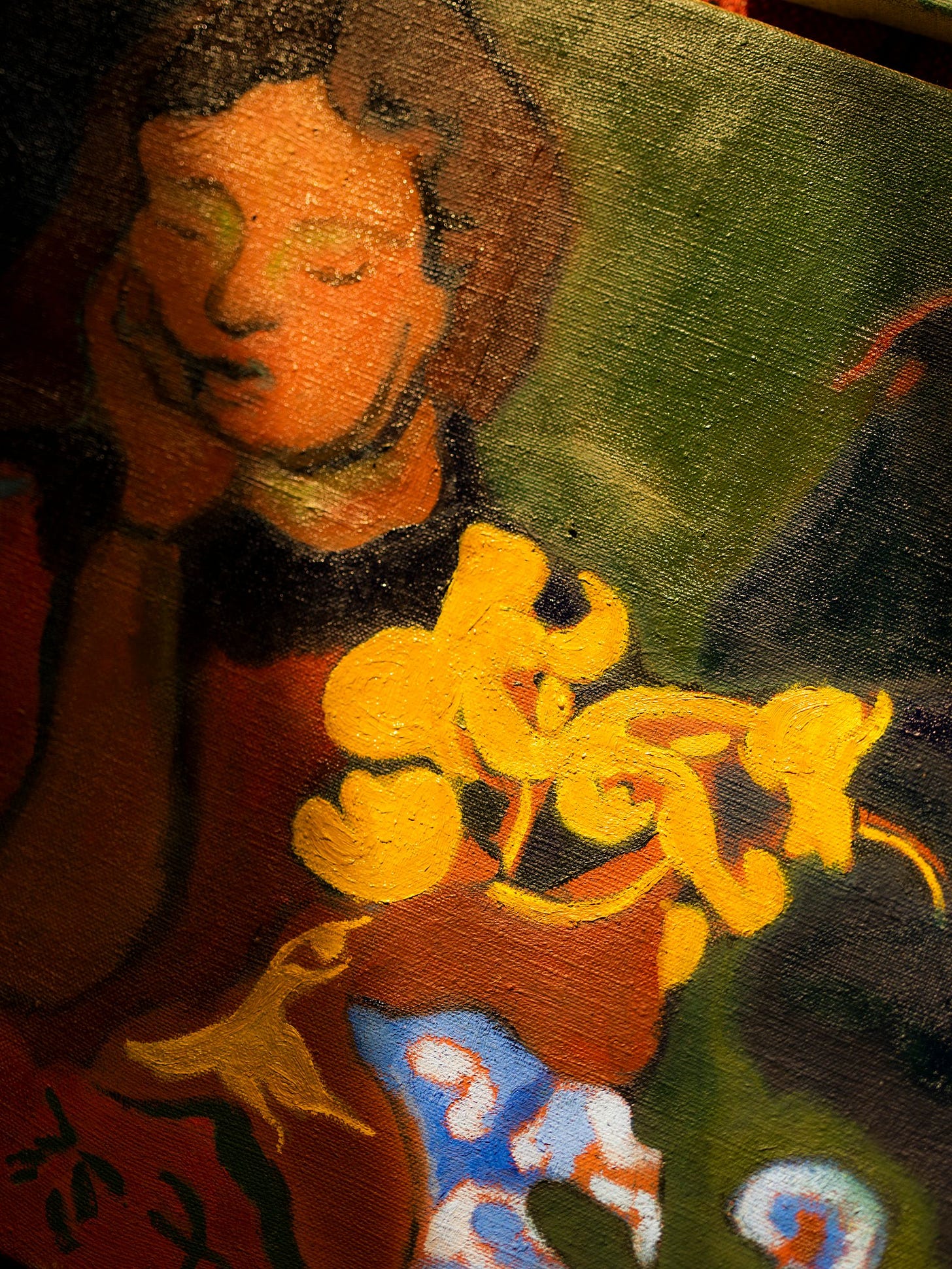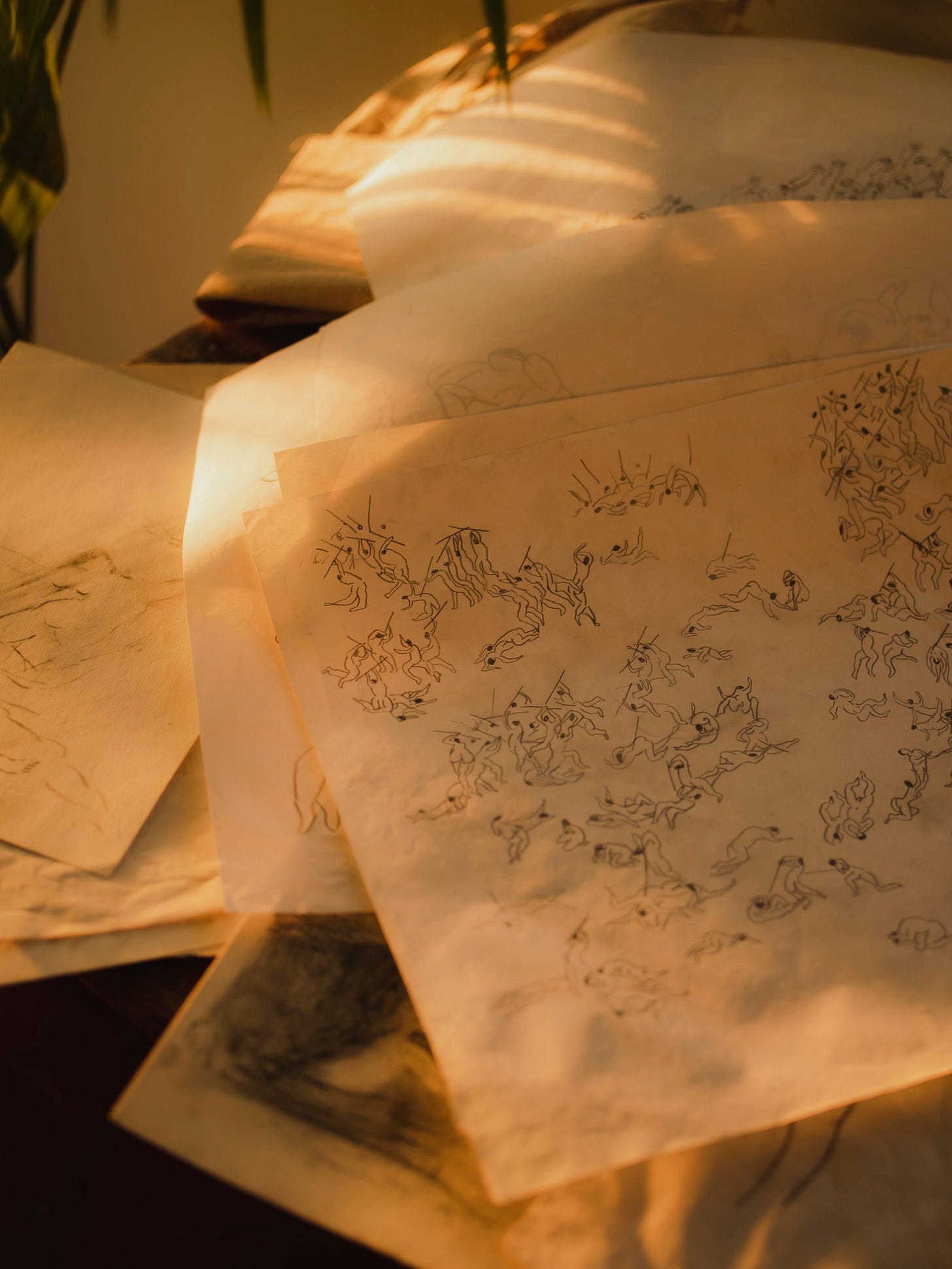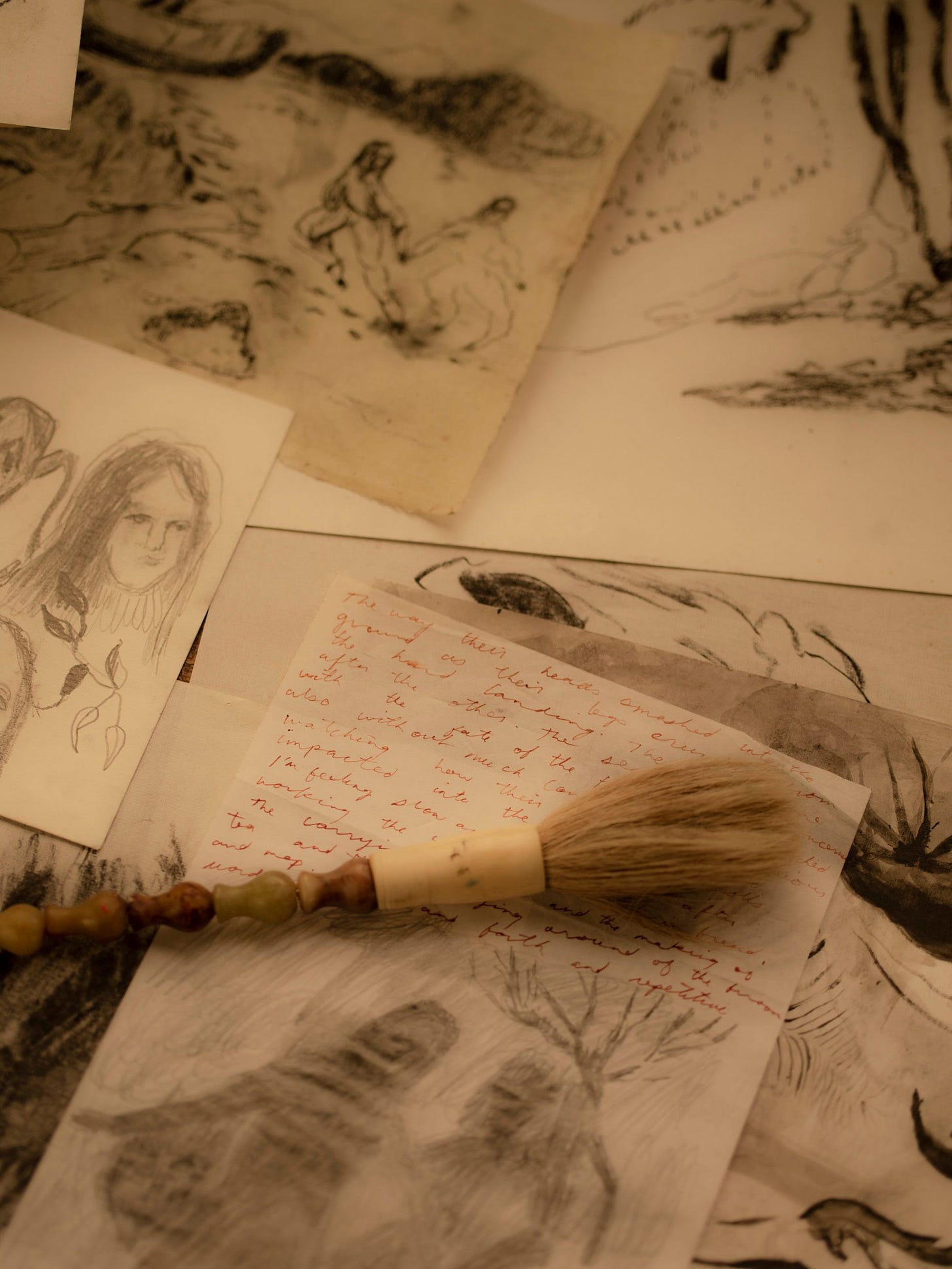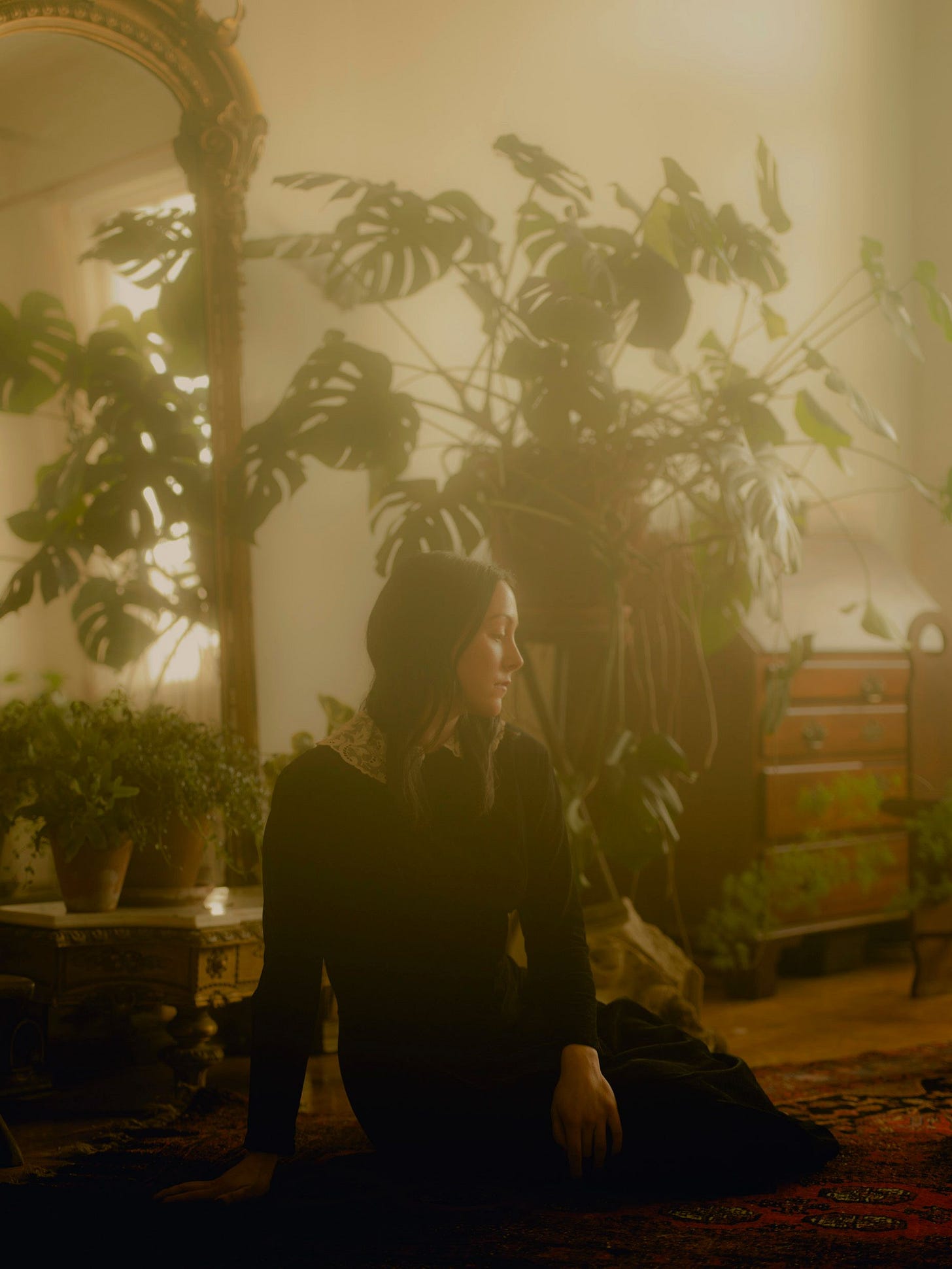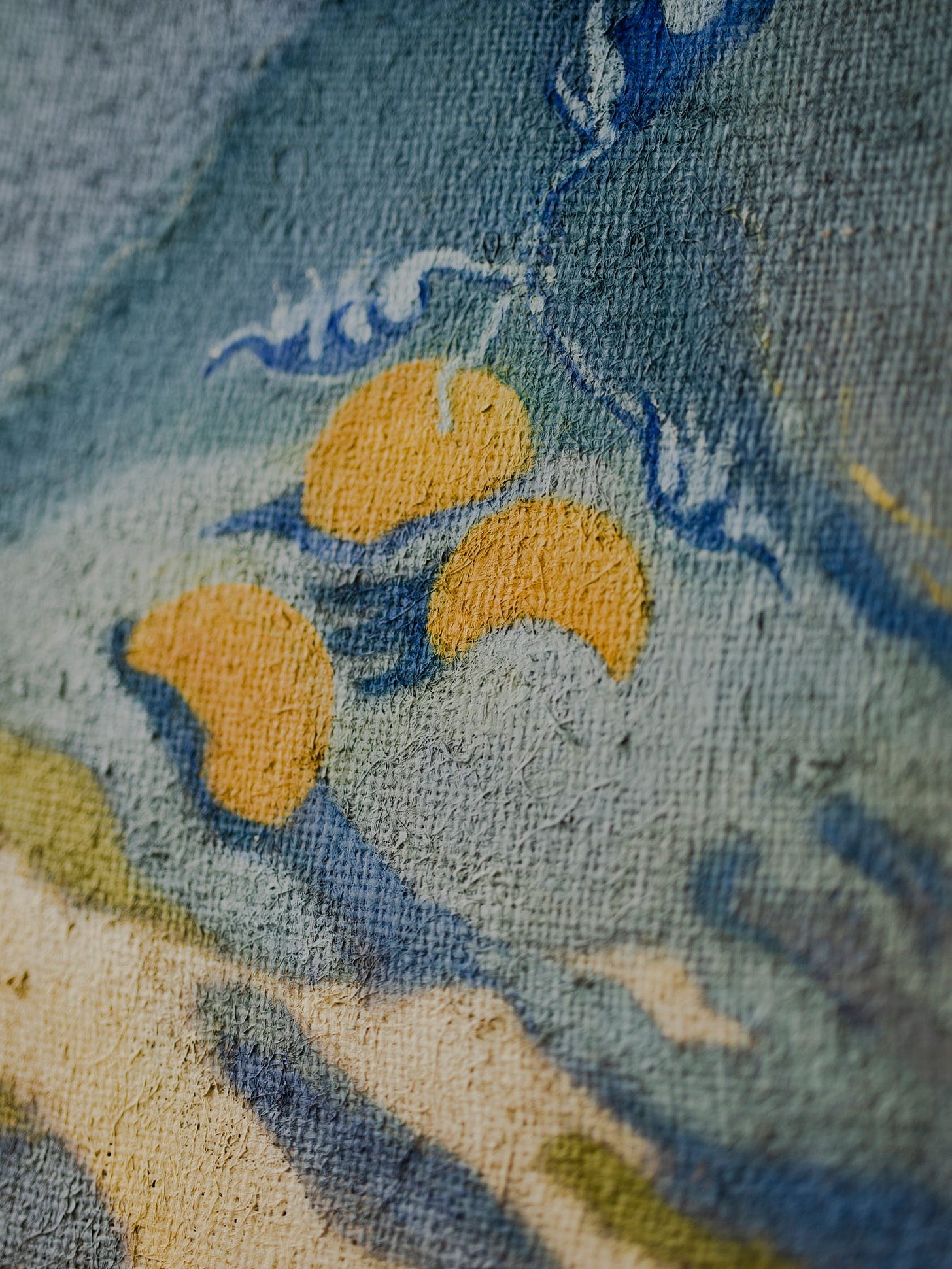An Afternoon with Painter Darby Milbrath
I first met Darby Milbrath a few years ago at the Gibraltar Point artist residency on the Toronto Islands, where I would encounter her outside translating the surroundings into mystical vistas that far exceeded the view I was seeing. Darby’s saturated canvasses look like they’re painted in the golden hour light, tinted with a soft amber that makes everything hazy, a bit more manageable on the eyes. The Fauvist-style paintings are interdisciplinary, inspired by Darby’s practice as a dancer, as well as someone deeply interested in plants, storytelling, and alchemy.
“I've always felt that I've needed to have an abundance of different creative outlets. I think of my entire life as an art object,” Darby told me during our conversation, which you can read below.
Tatum Dooley: Do your paintings tell a story, are there narratives embedded in them?
Darby Milbrath: My paintings have a strong storytelling element to them that is mostly autobiographical. The paintings, to me, feel like diary entries. Whatever I'm looking at, or experiencing, or feeling, or who I'm with, what I'm reading, what I'm listening to, all of these things go into the work.
TD: What are you reading or listening to right now that is inspiring you?
DM: I'm really interested in colour right now. I have a book called A Dictionary of Colour Combinations, it's a Japanese book by Sanzo Wada. Another book that I really love is called The Art of Colour by Johannes Itten. I'm constantly looking at, absorbing, and learning about colour. I think as a self-taught painter, it's quite simple to make a picture, but what I find is still slowly coming to me is colour. How to mix colour, how to achieve the perfect colour, and how to pair them so that they complement each other.
I also have a lot of books on alchemy and mysticism, and a lot of parables. In the old parables, they'll talk about the lore of plants, which I'm really interested in. I feel like these stories of healing, magical plants come into my work a lot. I'm reading William Blake's poetry, The Songs of Innocence and Experience. I love the idea of innocence in experience, like a child who's lost and found or the duality of a childlike state of wonder and the sometimes dangerous state of being an adult.
I find the fiction that I read inspires my writing, which I do daily. I've always had a writing practice that influences my painting practice. I really like Russian literature like Nabokov. He's so interested in memory and nostalgia and childhood, which I relate to. And he's very interested in describing nature, he loves butterflies and mushrooms. He talks about nature in a way that I find so beautiful.
Music is such an important part of my practice because it’s related so much to dance. I feel like I’m dancing when I’m painting because I’m painting to the rhythm of the music I’m listening to. It helps fuel the painting. I love listening to horror movie soundtracks. I love the intensity of it. Similarly, with classical music. Sometimes even hardcore techno if I need an energy boost.
TD: Is there an extension of your art practice that involves writing?
DM: I work on these daily manifestations where I treat myself like a master painter [laughs]. I'll write entries about specific works, knowing that it will be important in the future, to be like “oh, look at this artist’s writing about aging and the colours that she uses.” So I usually start at that point. And then I'll write more poetically about the painting or the meaning behind it, or where I think it should go.
For example, there's a painting I'm working on of two women in a forest scene. I was writing about who these women were in relation to each other and how they got there and where they're going. I think this helps me when I go back to the painting in the studio, to see the painting in a different way and to understand it better.
TD: Do you share that writing with anybody?
DM: It's private, but I would be open to sharing it. It’s like a diary.
TD: Why do you gravitate towards the female form in your paintings?
DM: I think the women are self-portraits. I’m painting my own experience, I'm not trying to paint somebody else. I feel my paintings are showing young women on a journey, seeking and longing for more. Some of them are full of sorrow or in love. They're all different versions of myself, and also my sisters. My sisters enter my work a lot more metaphorically.
TD: What do you mean when you say that you're a self-taught painter? And how do you find that your practice has changed since you began?
DM: I am a self-taught painter in that I taught myself how to paint. I didn't go to school, I don't have any education in painting. I quite literally started with oil painting in a very crude manner, painting straight out of the tube. I did my first oil painting as a finger painting. I didn't understand how the old masters did these beautiful renderings. And then I slowly did my own research to figure out technique and safety. A lot of it happens intuitively. I find that Nick [Bierk] has been a big influence on me because he is quite educated and knows so much about colour theory in particular. So that has really helped me and my practice.
I paint all the time. I feel that no painting is ever the same. I learn from each painting.
You can follow Darby on Instagram here.





